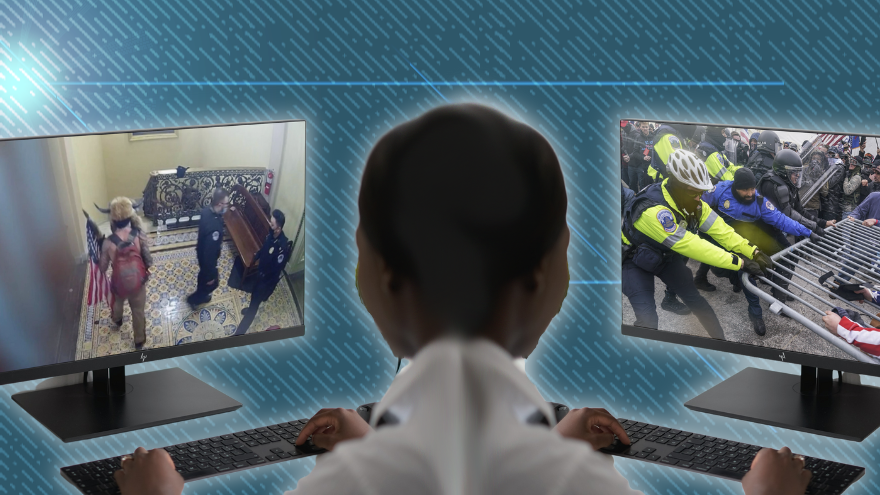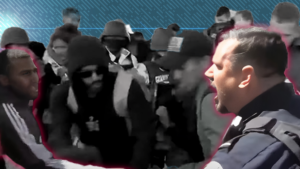I know a man who fled a cult. Everyone in the cult, including him, believed they were immortal.
But one day, one of the cult members died. They all sat with the corpse trying to come up with ways that could explain the death of someone who was supposed to be immortal. They brainstormed all sorts of ways to make sense of what appeared to be a very real death.
The cult travelled the country, and at some point, after they experienced the death of one of their members, my friend was in line to use a restroom. There was a bookshelf beside him. One book caught his eye. However, one of the laws in the cult was that no one was supposed to read books. His curiosity got the best of him. He opened the book. The first page he saw happened to describe a form of insanity. It said something like: if you are exploring and find a mountain, you would draw the mountain on your map. That is the right way to interpret your surroundings. However, if you have a map with a mountain, and you are where the mountain should be, but there is no mountain, then perhaps the map is a bad judge of reality. Someone who’s lost their hold of reality might try to come up with ways in which the mountain is there, despite what the map says. One might go so far as to say, well, maybe the mountain’s invisible. This might sound absurd, but my friend spent time in a cult that had convinced themselves that they could not die. My friend read from the book, and it reminded him of the way they all tried to explain the death in the cult. The death was his invisible mountain. The death was not on the “map” through which the cult traveled the land. Their “map” said there would be no death. Yet there was a death and now he and the rest of the cult tried to find a way to explain away the death so as to not upset their loyalty to the map that the cult had placed over their reality.
He left the cult soon after realizing that his cult member’s death was his own invisible mountain.
It might not be unique to modern man, but we all superimpose things onto our “maps” to make sure whatever map we use seems like an appropriate reproduction of our surroundings. Even when the map and our reality are in conflict.
If a large group of people all yell the same thing in unison, it’s easier for someone to fall in line than it would be to reject the masses. This has happened throughout history, it is happening now, and it will happen again. I think people might embrace invisible mountains because there is comfort in the fantasy rather than accepting reality. This might be why so many of us know people who experience cognitive dissonance—and we should be checking ourselves for it too.
We have a long list of invisible mountains that many people still view as legitimate—from Jussie Smollett to the Covington kids to Trump saying there was “good people on both sides” to COVID coming from a wet market.
The so-called insurrection of January 6 had been a most persistent invisible mountain until Tucker Carlson aired footage of Jacob Chansley, aka The Q-Anon Shaman, being led through the Capitol by Capitol police officers. The video contradicted what many believed — that Chansley had stormed the Capitol violently. However, he seemed to meander from door to door with officers acting as ushers. The video might recall for some the story Joe Biden told David Letterman in 2007 about the time he was 21 years old and walked into the Capitol without permission. He told Letterman he “sat down in the presiding officer’s chair” and was immediately arrested.
It’s fascinating to see the new narrative emerge in the wake of Tucker Carlson sharing just a fraction of the 40,000 hours of supposed video from the Capitol on January 6.
Like a lot of Americans, I witnessed the events of January 6 in real time. Many of us had predicted that something bizarre was going to take place that day. We’d already entered a bizarro world by then, so anything seemed possible.
I watched a livestream of January 6 alongside my nearly 90-year-old grandmother and her sister. My grandma had voted red and blue and independent throughout her life. But she and her sister despised Trump. They believed in the caricature that the corporate press had created. I don’t know if my grandma could differentiate between the parodies and the realities of the former president. He’d become so oafish in her mind that it was more than possible for him to say something that one might hear on Saturday Night Live. (Case in point, Tina Fey’s impersonation of Sarah Palin led many to believe that Palin actually said she could see Russia from her house—which she never said—but the phrase entered the zeitgeist and people attribute the quote to her to this day.)
As the events of January 6 unfolded in real time, my grandmother and her sister had an extremely different interpretation than me—despite the fact that we were both watching the same screen.
My grandmother looked at her TV in horror on January 6. If she were still alive today, she might agree with some of the leftist politicians who compare that day to 9/11 — which, to me, is an absurd and hyperbolic comparison. Meanwhile, as I watched a mostly confused crowd amble through the Capitol, I thought about how other corporate news outlets stood before a burning city during the George Floyd riots and tell us that the “protests” were “fiery, but mostly peaceful.”
In the immediate aftermath of January 6, my skepticism worsened. Do you know the name John Earle Sullivan? He made the rounds on a few news outlets as a sort of citizen journalist who captured video from inside the Capitol. However, it became clear that he might’ve been at the Capitol for reasons that were not as innocent as he claimed. He broke a window and is on video seemingly instigating unrest. Sullivan also sold his footage of January 6 to at least two different corporate media networks for tens of thousands of dollars.
Another thing I don’t think was widely discussed after January 6 was how Trump asked for a bigger capitol police presence for January 6, but his request was rejected.
But this is how one helps build invisible mountains. The fastest and the loudest to claim a truth, or a narrative, know they can take advantage of people at large because once a seed is planted in someone’s brain, it’s hard to rewire that point-of-view.
Corporate news outlets are prime examples of political snobbishness and institutional arrogance. But this can happen at every level of news media. Everyone can trap themselves inside their own narrative. We might eschew the muddiness of reality in favor of a clean and digestible “truth.” Anyone can dig their heels into a carefully curated reality.
That being said, I don’t know if it’s enough to detangle the American consciousness from its beloved media institutions. I believe we need a renaissance in the individual and our perception of reality—rather than thinking we can outsource our salvation from the “invisible mountains” by way of the corporate press’ destruction.
My grandma believed that Trump said, “We are going to march into the Capitol and stop that vote.” He did not say this. But that was my grandma’s invisible mountain. I could show her the whole speech again later on, and she would find ways to say that he said it—just in veiled, cryptic messages that only his supporters would understand—and, of course, my grandma believed she could “decipher” Trump.
She believed this because the talking heads she watched religiously summarized his speech in a way that made it sound like that was the reality.
My grandma thought I’d become a radical, far-right, red-hat wearing insurrectionist because I question the television’s authority. She also views the television as an altar for authority and truth. Her life is structured around television. My wife and I, on the other hand, do not own a TV. We never have. I don’t think we ever will.
My grandma used to get offended when I told her my son, who was five at the time, couldn’t watch the news on TV with her. But—“it’s just the news,” she’d say as her TV showed images of bombs exploding and people beat to death in the street. Of course, I want my son to know the depths of human cruelty, but maybe we can wait until first grade…
We are a nation that has lost the ability to discern objective truth. There is no such thing as objective history. Even that which you might omit from your idea of objectivity shapes a subjective point of view.
When Pablo Picasso was in his cubist phase, he would put something like a vase or a bowl of fruit on a table and circle it while painting it from every angle. He said he captured the essence of it rather than what some might think would be a realistic representation of it. This is that fractured, child-like art that some hate and others love. I tend to love it. To me, art styles like cubism and absurdism are far better representations of reality than some of the classical works. (I also love classical art, but I think it reaches for the absolute best version of humanity—which we should all aspire to and find inspiration in. But it doesn’t depict reality as distorted and fractured and beautiful and strange as it truly is.)
In this regard, I see all of history as cubist. It is a multi-angled, super fractured system of contradicting statements and biased distortions. It’s hard to make sense of it. You can find something new about it every time you look at it.
Once you start seeing the full scope of how fractured our understanding of history is, I do fear seeing history as cubist could lead one to then take a nihilistic view of all history—where there is no need to believe in history at all because, on a whole, it’s impossible to believe anything. If nothing is real, then anything and everything can be real. Which is where it feels like we are today. The authorities of truth have eroded. Experts cancel each other out. Different news outlets seem to exist in different dimensions. We can watch video of something happening with a group of people and disagree on what we saw.
This is why people can debate the veracity of everything from death to disease to dinosaurs. Historical nihilism can allow one to dismiss everything. This is how cults emerge. I believe in history. I just believe it is far more nuanced and complex than many believe.
Modern journalism straddles the real with the caricature. They pretend to be objective, but what they omit and the tone they use exudes subjectivity. Much of it comes from a place of extreme bias. Supposedly, George Washington spent his last day in office writing corrections for all the fake news written about him. I heard this from an expert, but who knows. Maybe the letters are a forgery.
Even if humans could develop time travel, I think different time travelers would see the past differently.
Truth is at stake, but I suppose it always has been since the dawn of man. We are watching people warp their worldviews over their realities. It reminds me of the Orwell quote: He wears a mask, and his face grows to fit it.
We should be reluctant to trust anyone who thinks they’ve monopolized the truth on history. It’s important to remain vigilant. Those who want to convince you of invisible mountains are trying to enlist you in a cult.

